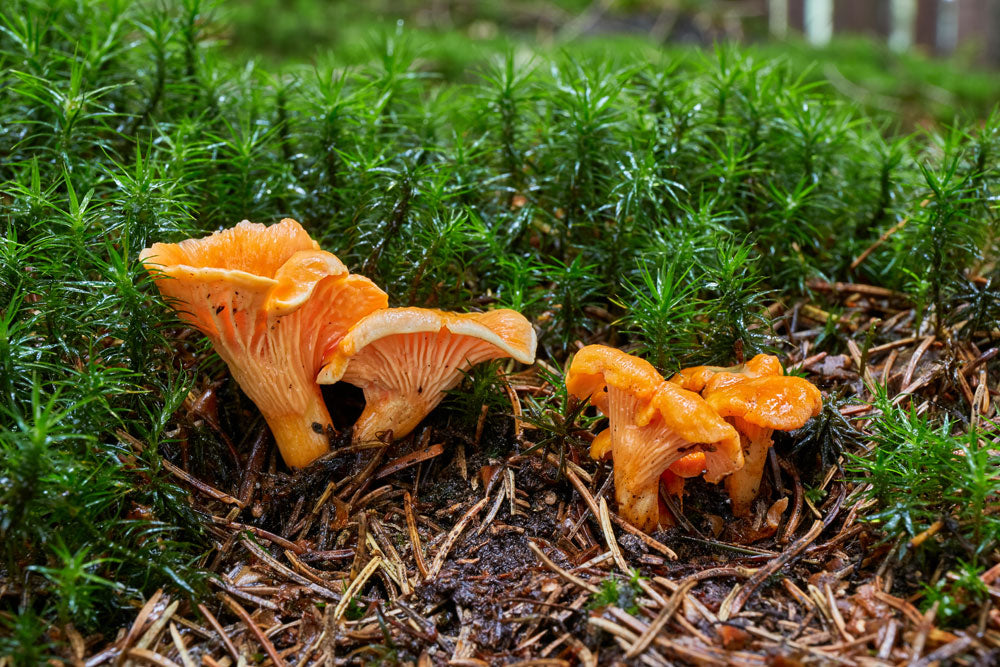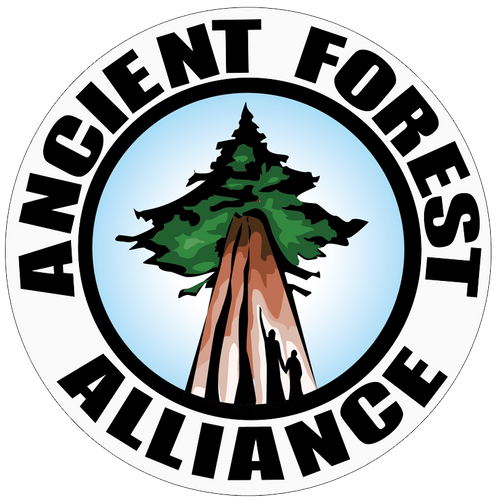
Golden Harvest: The Forager’s Guide to BC’s Chanterelle Mushrooms
Share
Golden Harvest: The Forager’s Guide to BC’s Chanterelle Mushrooms
As summer rains soak British Columbia’s forests, a golden treasure emerges beneath the cedars and hemlocks. Chanterelles (Cantharellus cibarius) aren’t just a gourmet delicacy—they’re ecological linchpins and cultural icons. But before you forage, remember this golden rule: These mushrooms feed entire forests long before they grace human plates.
Meet the Chanterelle: BC’s Forest Gold

Appearance Checklist:
- Color: Vibrant egg-yolk yellow to sunset orange (never brown or red)
- Shape: Trumpet-like cap with wavy, irregular edges (2-12 cm wide)
- Underside: Distinctive false gills—thick, wrinkled ridges running down the stem
- Stem: Solid and meaty (never hollow), same color as cap
- Scent: Fruity aroma reminiscent of apricots or peaches
- Habitat: Mossy old-growth forests, especially near Douglas fir, western hemlock, and birch
⚠️ Deadly Lookalike Alert:
Jack O’Lantern (Omphalotus olivascens)

- Grows in dense clusters on decaying wood (chanterelles grow solo in soil)
- Has true knife-like gills (not ridges)
- Glows faintly green in dark (bio-luminescent)
→ When in doubt, leave it out!
Why Chanterelles Matter Beyond Your Basket
These mushrooms are forest architects, not just food:
- Symbiotic Superheroes: Form mycorrhizal networks with trees, trading water/nutrients for sugars
- Wildlife Buffet: Deer, squirrels, banana slugs, and insects rely on them
- Ecosystem Indicators: Thrive only in healthy, undisturbed forests
Ethical Imperative:
*"Chanterelles grow from underground networks (mycelium) that can take decades to establish. Over-harvesting destroys this delicate web. Always leave 30% behind—especially young mushrooms—to ensure future growth."*
From Ancestral Wisdom to Modern Kitchens
Indigenous Traditions:
- Coast Salish peoples harvested chanterelles as seasonal delicacies
- Often sun-dried for winter storage or trade
- Revered as gifts from the forest spirits
Culinary Magic Today:
- Flavor Profile: Buttery, peppery, with hints of apricot
- Preparation:
- Never eat raw (causes mild nausea)
- Sauté lightly in butter or ghee (high heat destroys flavor)
- Pair with wild thyme or spruce tips
- Recipe Teaser: Kootenay Chanterelle & Brie Galette (link in our Wild Cookbook)
The Ethical Forager’s Guide: Harvest & Preserve
Sustainable Harvest Protocol:
- Cut, Don’t Pull: Use scissors/knife to slice stem above soil
- Leave the Babies: Never harvest caps < 3cm wide
- Tread Lightly: Avoid compacting soil near patches
- Spread Spores: Carry mushrooms in mesh bags (plastic suffocates)
Preservation Methods:
|
Method |
Steps |
Shelf Life |
|
Drying |
Slice ¼", dehydrate @40°C until brittle |
2+ years |
|
Freezing |
Sauté in butter, freeze in portions |
1 year |
|
Infused Oil |
Pack raw in sterilized jar, cover with olive oil |
6 months (refrigerated) |
|
Tincture |
Chop fresh, submerge in vodka 6 weeks |
5+ years |
Apothecary Tip: Chanterelle tinctures harness immune-boosting beta-glucans—perfect for winter wellness tonics!
Health Benefits: More Than Flavor
- Vitamin D Powerhouse: Sun-dried chanterelles outshine fortified dairy
- Antioxidant-Rich: Fights inflammation with ergothioneine (unique to fungi)
- Immune Support: Beta-glucans stimulate white blood cell activity
Closing: We Are The Stewards
As August rains awaken BC’s forests, remember:
Chanterelles are not commodities—they’re lifelines connecting trees, animals, and soil. Forage with sacred reciprocity: take sparingly, give thanks, and protect their ancient habitats.
May your basket be light, your heart full, and the forest forever golden.

